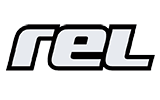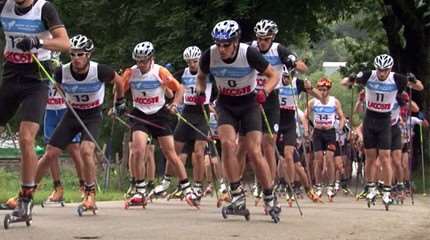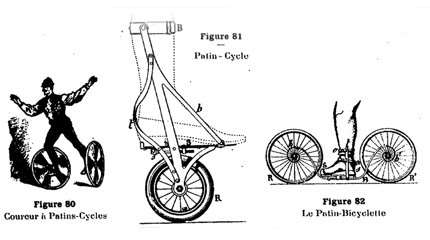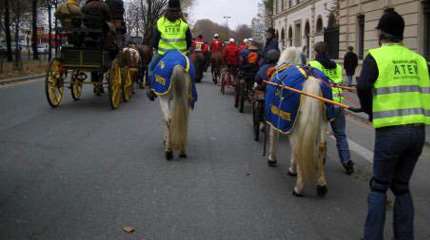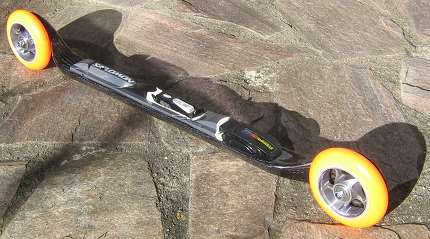Anatomy of a pair of rollerskis
Par alfathor |
Publié le 14 October 2010 |
Mis à jour le 3 November 2020 |
Catégories :
Rollerski
All
Rollerski
| Sous-catégories :
manufacturing of roller skates
manufacturing of roller skates
| 32612
| Tags :
Anatomy rollerskis
rollerskis
It is not rare to come across rollerskis on competitions or on the roads of Bourgogne and Franche-Comté, France: Rollerskis are finally not that different from our rollerskates, and for quite a lot of reasons. We studied a pair to know a bit more about their designing…
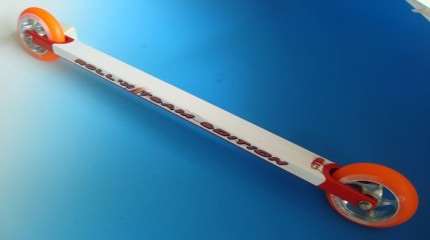
The structure: a beam
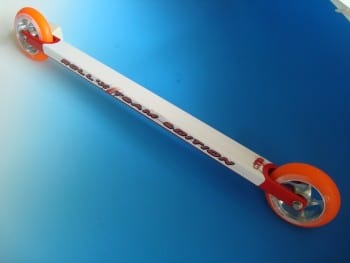 The designing of a pair of rollerskis is quite simple, in the end. It revolves around a ‘beam’ made of aluminum or composite materials (carbon / glass fiber). It measures about 550 mm (vs. 50 cm to the max including the wheels for a pair of speed skates, according to the international rules). Rollerskis are then quite short compared to cross-country skis.
The designing of a pair of rollerskis is quite simple, in the end. It revolves around a ‘beam’ made of aluminum or composite materials (carbon / glass fiber). It measures about 550 mm (vs. 50 cm to the max including the wheels for a pair of speed skates, according to the international rules). Rollerskis are then quite short compared to cross-country skis.
Price: You can find beams only for 75 Euros.
Rollerski wheels
There is one wheel at each end of the aluminum beam. The wheels have rims with aluminum or composite spokes. In the case of aluminum cores, they are extremely rigid as they are machined from billet.
The wheel is at the center of a metallic axle (often made of brass). It is separated from the beam by metal spacers. In the end, the design is pretty close to that of a scooter.
The diameter of the wheels varies between 76 and 80 mm (for sprint/speed skiing) and 100 mm with hardness from 76A to 83A. For a question of grip, harder wheels are not used. There are only two contact points to the ground per ski.
These wheels have the same width as rollerskate wheels (22 mm). The main difference is that they are often remoldable when they have an aluminum rim! You can add polyrethane when it is worn out.
The on-core can be made of polyurethane, just like rollerskate wheels, or rubber. That material is used to improve the grip on damp grounds, or to force more during training and recreate the conditions of snow skiing!
Price: Between 15 and 30 Euros per wheel.
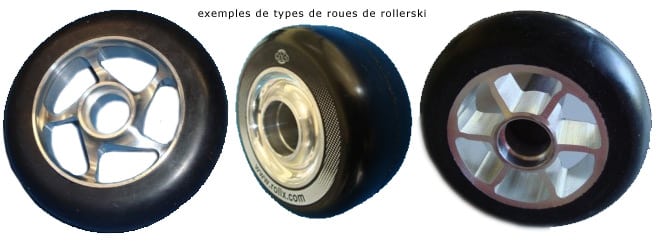
Exampes of types of rollerski wheels
Bearings and axles
It is the same type of bearings as on rollerskates, that is to say 608 standard models. The use of ceramic seems to be more frequent than in rollerskating. It is possible to put microbearings with adaptors.
Price: Between 1.5 and 10 Euros per bearing.
Otherwise, rollerki also offers full axles and even braking devices for around 40 Euros.

A braking device / A full axle / A spacer
The bindings of rollerskis
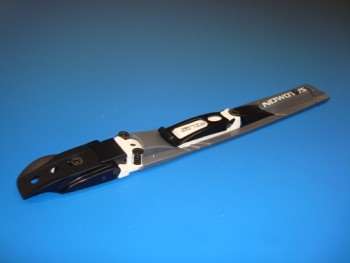 They enable to link the boot to the rollerski. You should be careful about the norms corresponding to your boot brand: NNN for Rossignol or Alpina for example, and SNS or SNS Pilot for Salomon.
They enable to link the boot to the rollerski. You should be careful about the norms corresponding to your boot brand: NNN for Rossignol or Alpina for example, and SNS or SNS Pilot for Salomon.
Price: around 50 Euros for a pair of bindings.
The boots
In rollerskiing, you use the same boots as in cross-country skiing. Take your time to make your choice according to your level, as rollerski boots need more maintenance than cross-country boots, especially with narrow wheels.
Their types vary according to the practices: skating or classic.
Price: From 80 Euros, count 180 Euros for a good pair.
And what about the sticks?
They are used just like in cross-country skiing. They are used for propulsion ton assist the stride, but also for balance. You should choose a stick that is not too flexible to have a good bearing, but not too rigid not to relay all the vibrations.
Special caps are added to protect the stick from the rubbing to the ground. The length varies according to the practices: skating or classic.
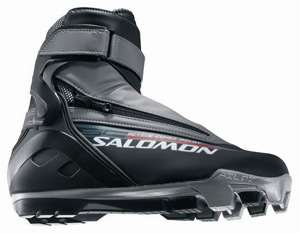 Price: from 15 Euros per pair.
Price: from 15 Euros per pair.
How much does it weight?
Between 1 kg and 1.5 kg for a pair without the bindings and the boots.
Prices
The high range competition models can reach the 300 Euros for a pack or rollerskis with bindings… To which you have to add the boots and the sticks.
Where to find rollerskis?
One of the specialists of the discipline in France is none other than Olivier Myallonnier of Roll’X.
Useful Links
Photos : RollX
Auteur
Alexandre Chartier
''alfathor''
Alexandre est le fondateur et webmaster de rollerenligne.com depuis 2003. C'est un passionné de roller en général, tant en patin traditionnel qu'en roller en ligne. Il aime le patinage à roulettes sous tous ses aspects : histoire, économie, sociologie, évolution technologique... Aspirine et/ou café recommandés si vous abordez un de ces sujets !
